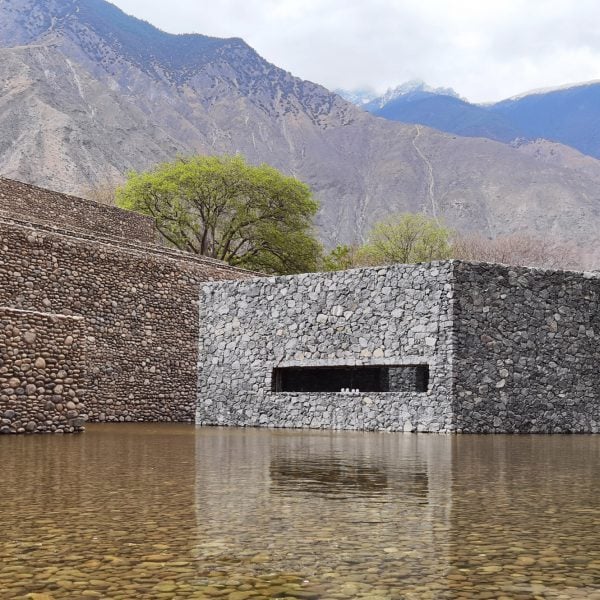[ad_1]
Stepped terraces cut into the landscape mark the Quzika 1865 Winery Complex, which Chinese studio PL-T Architecture has created at the foot of Dameiyong Snow Mountain in Tibet.
Located in Quzika, Markam County, the winery is designed by PL-T Architecture to “co-exist with nature” while providing the required facilities for producing wine and winetasting.
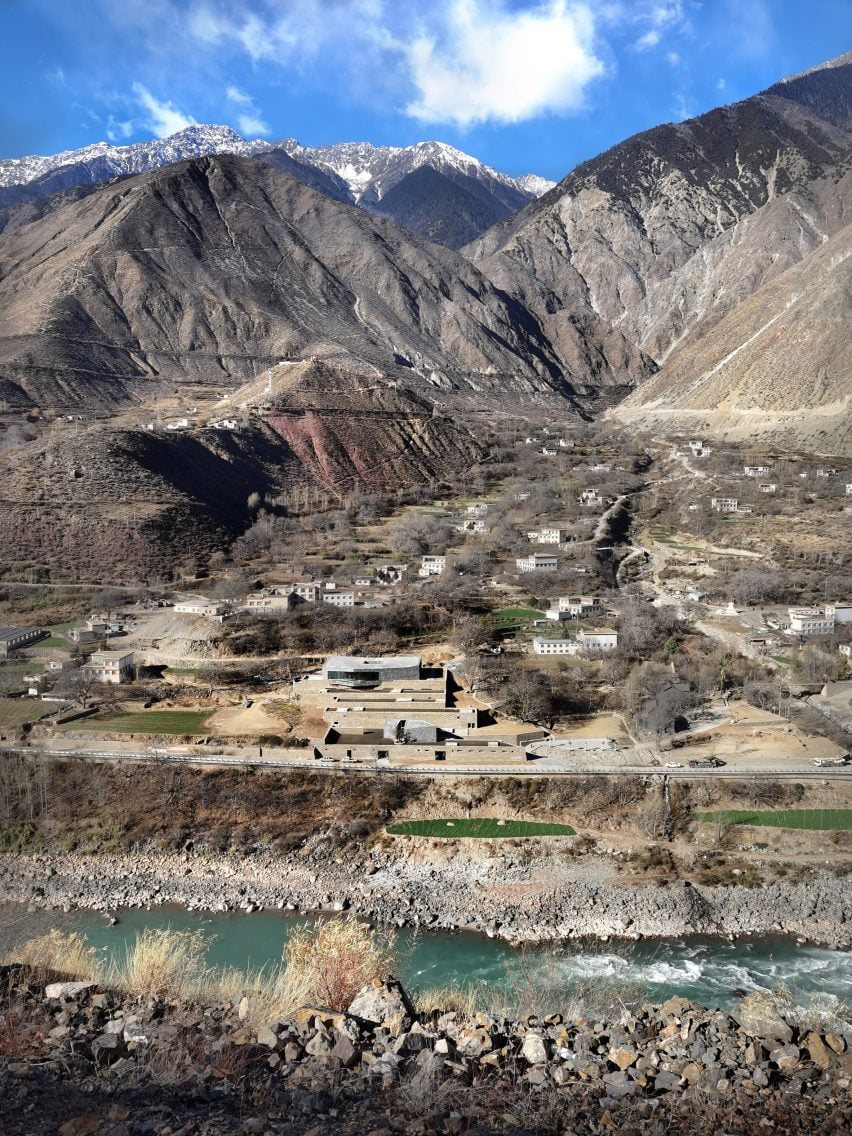
Set against the mountainous backdrop, Quzika 1865 Winery Complex’s stepped formation facilitates gravity-flow winemaking – a process of making wine that uses gravity in place of mechanical force.
Its staggered form is also designed to align with the site’s topography and preserve ancient trees on the site.
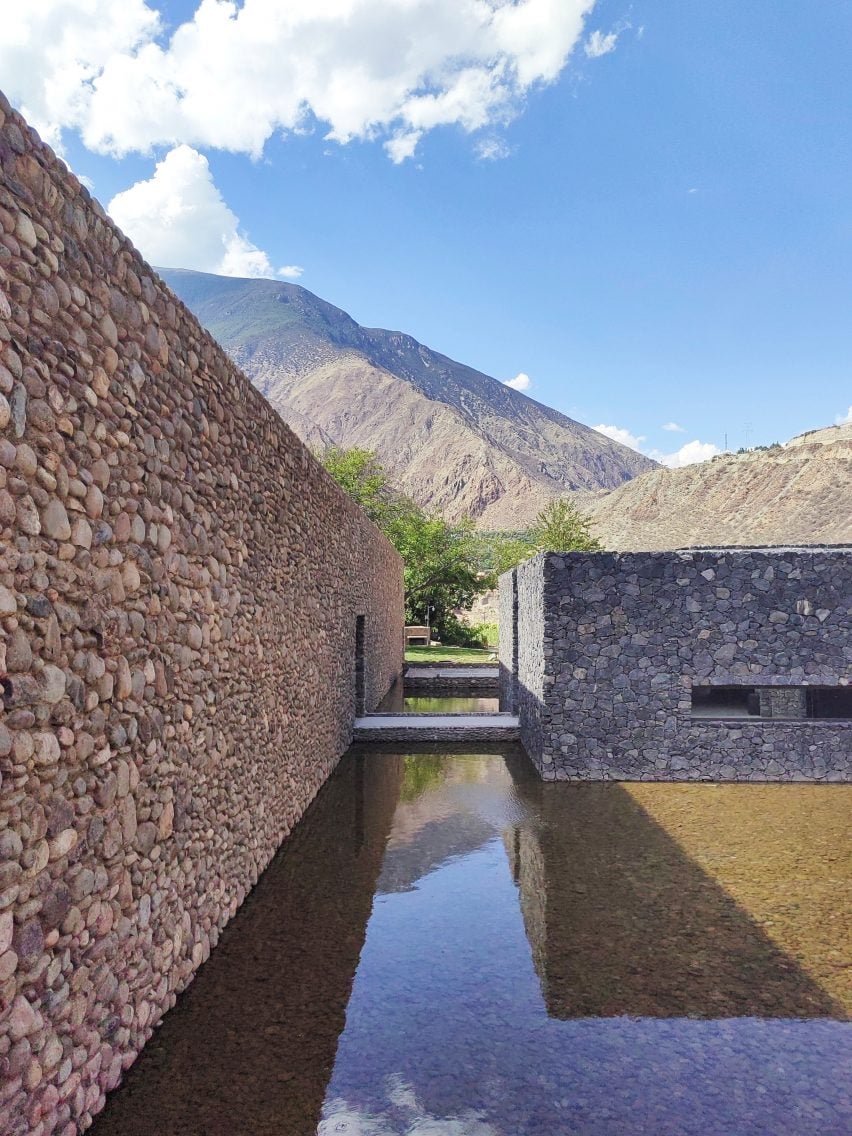
“The terraces at the foot of the Dameiyong Snow Mountain that extend into the Lancang River are dotted with century-old walnut trees and century-old grape vines,” PL-T Architecture told Dezeen.
“It was necessary to respect the original natural environment and landform of the site, as any old tree could not be destroyed,” it continued. “Learning from the local Tibetans as well as nature, the design expresses the respect and reverence for the mountains by hiding.”
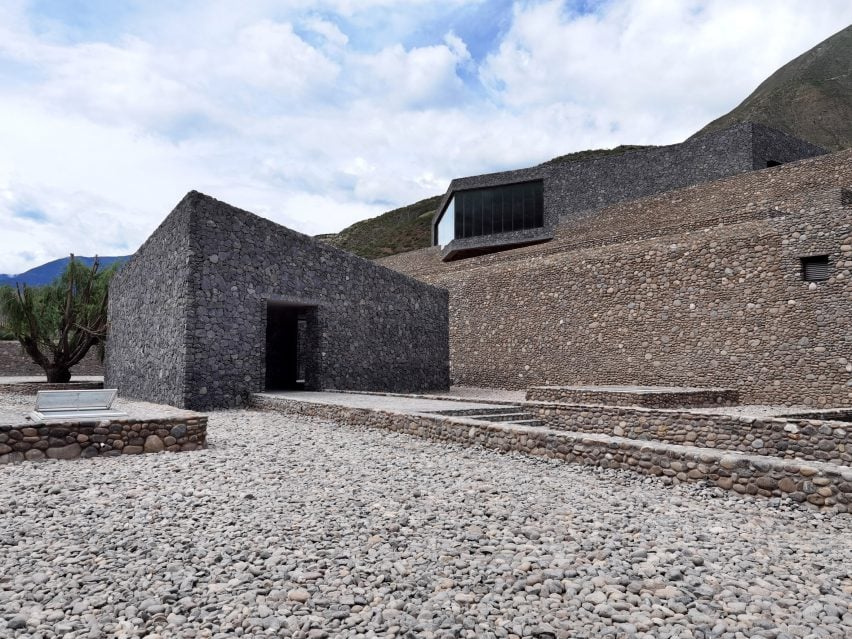
The exterior walls of the winery are built from locally sourced stones, chosen to connect to an original stone wall on the site but also help thermally insulate the building.
This also enabled PL-T Architecture to work with local construction workers and is hoped to help the building blend into the surrounding landscape.
“Resolving the conflict between man-made structures and the natural environment is a constant topic for me,” said chief architect Wang Jianfeng.
“At a time when our life is constantly being compressed by man-made structures of enormous scale, the attitude of natural symbiosis is very precious” he continued.
“For thousands of years, the local Tibetan villagers’ reverence for nature and their humble and low-key attitude to life is worth learning for all of us. They are the teachers of architects today.”
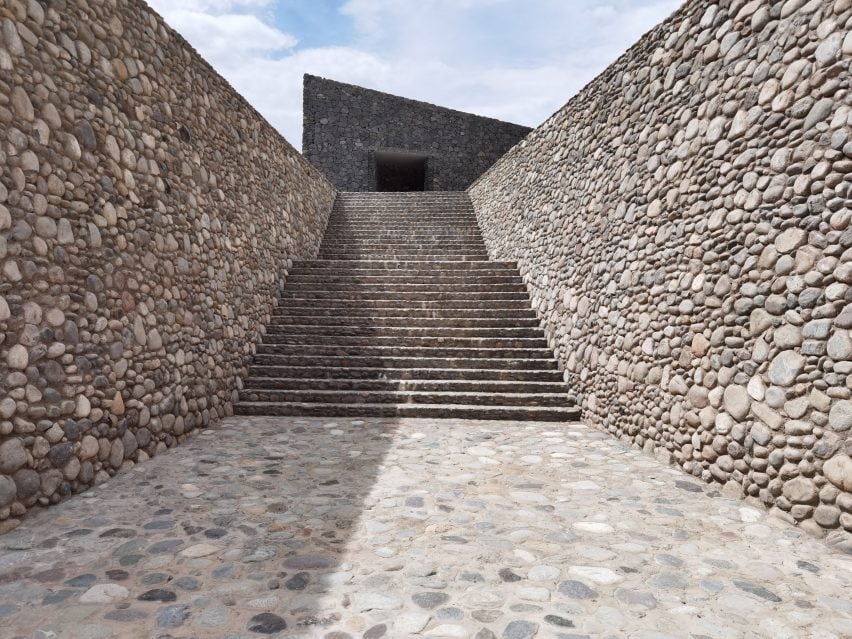
Internally, the winery’s spatial organisation is determined by the stages of winemaking. At the highest point is a cold room and area for grape processing, which leads down into the laboratory and fermentation areas.
Beyond this is the vaulted bottling and storage cellar, buried underground and overlooked by a visitor-tasting area.
Referencing the history of winemaking in the area, which can be traced back to French missionaries in 1865, this large vaulted cellar is modelled on the arches of Catholic churches.
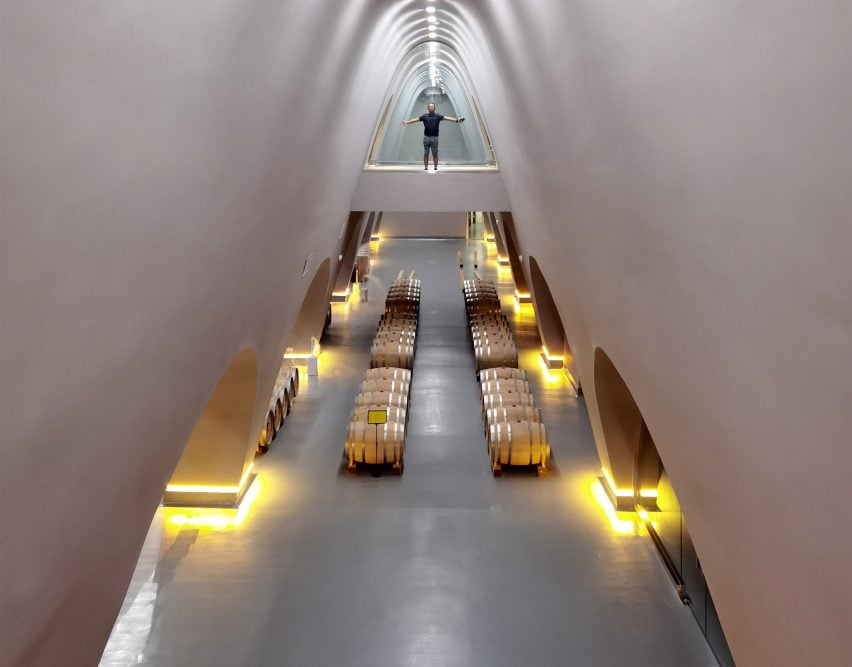
Other wineries featured on Dezeen include a “discreet” barrel-vaulted structure in Spain by Foster + Partners.
On the island of Samos, a stepped stone vineyard was recently adapted by Greek architecture office K-Studio to host a buried visitor space.
The photography is by Jianfeng Wang.
[ad_2]
Source link
